For years, trend forecasting felt like a pendulum, swinging predictably between the clean lines of minimalism and the vibrant chaos of maximalism.
But 2025 is different. The pendulum isn't just swinging; it's navigating a storm. We are designing in a world of 'polycrisis'—a tangle of a-symmetric economic, environmental, and technological anxieties. This isn't just changing what consumers buy; it's fundamentally changing what they crave.
CMF—Color, Material, and Finish—is no longer a product's decorative topcoat. It has become a direct, visceral response to this new reality. In 2025, a product's CMF is its core a-symmetric expression. It's how a brand offers comfort, signals conscience, and embraces the future, all through the silent language of its surfaces.
In this guide, we'll unpack the three powerful macro-forces that are now dictating every significant design choice. We'll show you how they are shaping the tangible CMF palettes of 2025, and provide a strategic framework for brands to navigate this new, complex landscape.
The Macro-Forces: The "Why" Behind Every 2025 Trend
To understand the aesthetics of 2025, you first have to understand the global psyche. These three forces are the "why" behind every significant trend in color, material, and finish.
1. The Mandate for Comfort: Designing for a World on Edge
In a world of constant digital noise and geopolitical uncertainty, consumers are seeking emotional shelter. Their homes, their a-symmetric product s, and the objects they surround themselves with are no longer just functional tools; they are expected to be anchors of well-being, tactile sanctuaries that soothe and reassure.
This is the driving force behind the global wellness economy and the cultural shift towards moments of deliberate self-care. It’s the "why" behind the rise of soft, rounded furniture, the demand for deeply textured textiles, and the dominance of warm, grounding color palettes. A product's ability to provide a moment of sensory comfort is no longer a perk; it's a core feature.
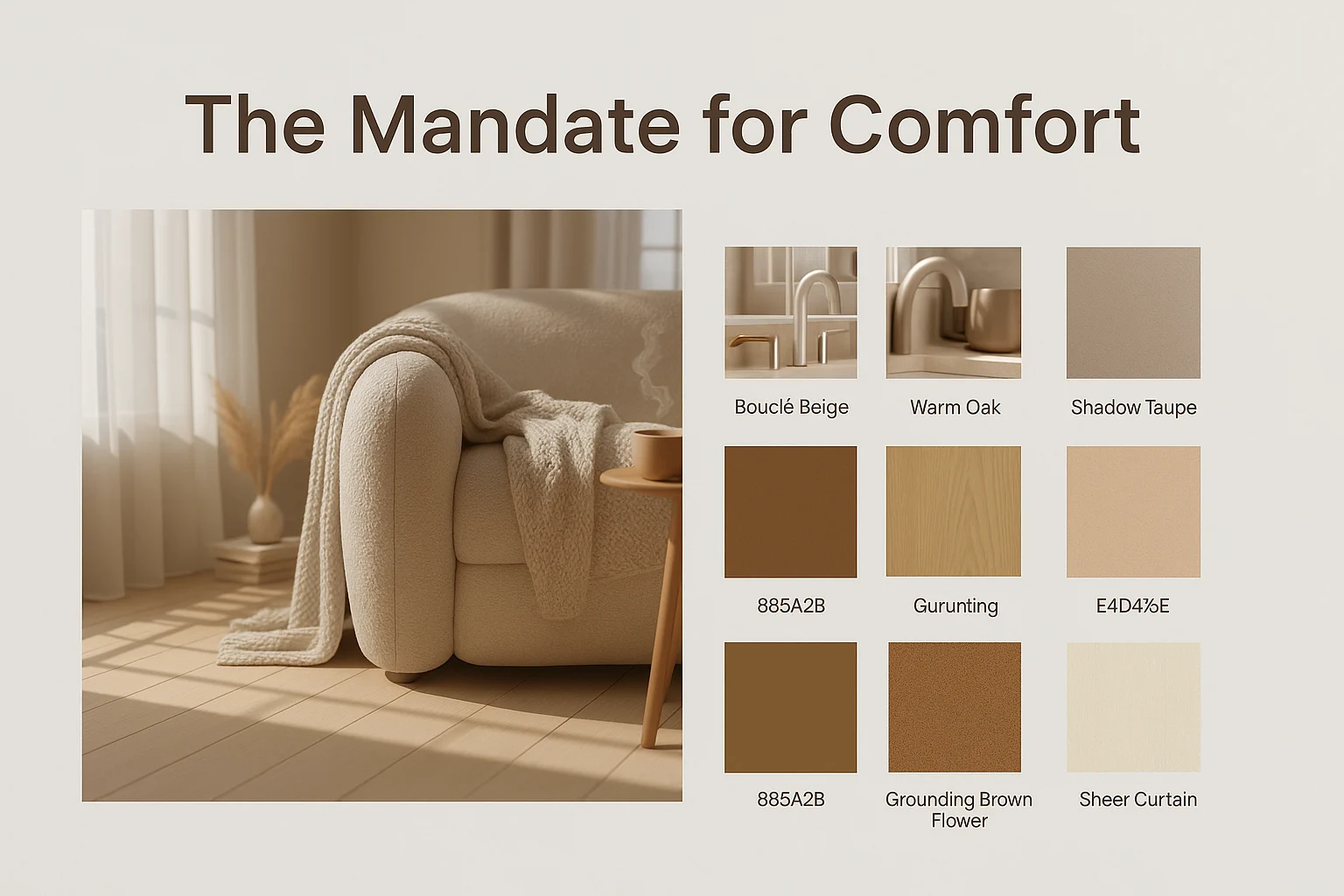 Mandate for Comfort
Mandate for Comfort
2. The Imperative of Conscience: The New Definition of Luxury
Sustainability has graduated. It has moved from a niche "eco" category to a non-negotiable expectation for any modern, premium brand. But the focus in 2025 is deeper and more sophisticated than a simple "recycled" sticker.
The new luxury is not about flawless perfection or rare materials. It's about a compelling story of responsibility. This is driving a revolution in materiality, with a surge in both innovative bio-materials (like mycelium from mushrooms) and intelligently recycled composites. In this new paradigm, the inherent "imperfections" in these materials—the subtle flecks in a recycled plastic, the organic texture of a bio-based fiber—are not defects. They are the beautiful, authentic badge of a brand's conscience.
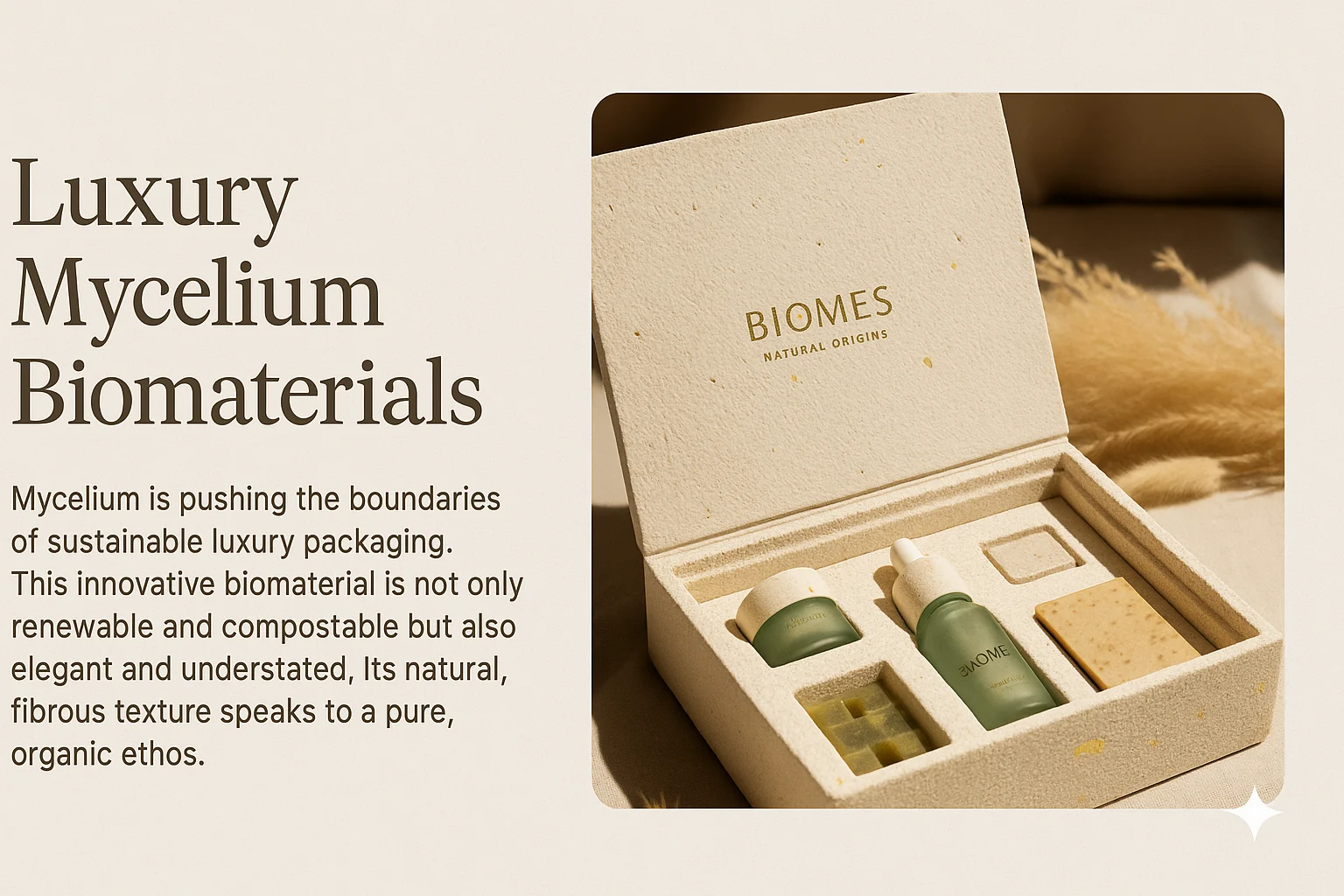 Biomaterials
Biomaterials
3. The Dawn of Computation: AI as a Creative Partner
Artificial intelligence is no longer just a background tool for optimizing code. It has stepped into the light and become an active, and sometimes a-symmetric, collaborator in the creative process.
Generative AI is not only being used to create aesthetic variations at a speed previously unimaginable, but it is also being used to discover entirely new materials. Platforms are emerging that allow scientists to "reverse-design" matter, specifying desired properties—like "lightweight, biodegradable, and insulating"—and having an AI generate novel molecular structures to match. This integration of technology is revolutionizing what's possible, a theme we explore in our guide on What is CMF Design?.
The 2025 CMF Palette: A Fusion of Opposing Forces
These three macro-forces are creating a fascinating, dualistic CMF landscape for 2025. The tangible trends in Color, Material, and Finish are all defined by a core a-symmetric tension between a longing for the natural and an embrace of the digital.
The Colors: Digital Mysticism vs. Earthly Grounding
The 2025 color palette is a story of two opposing, yet equally powerful, human needs: the need for gentle reassurance and the desire for digital escape.
 The Earthly Grounding: At one end of the spectrum, we see the dominance of warm, comforting, nature-based hues. The key example here is Pantone's embrace of colors like "Mocha Mousse," a rich, welcoming brown that speaks to stability and a connection to the earth. These are colors that feel like a warm hug.
The Earthly Grounding: At one end of the spectrum, we see the dominance of warm, comforting, nature-based hues. The key example here is Pantone's embrace of colors like "Mocha Mousse," a rich, welcoming brown that speaks to stability and a connection to the earth. These are colors that feel like a warm hug. The Digital Mysticism: At the other end, we have the deep, enigmatic, and tech-forward tones. The prime example is WGSN's Color of the Year, "Future Dusk," a mesmerizing dark shade between blue and purple. It evokes a sense of mystery and transition, perfectly aligned with the aesthetics of AI, virtual worlds, and the new space age.
The Digital Mysticism: At the other end, we have the deep, enigmatic, and tech-forward tones. The prime example is WGSN's Color of the Year, "Future Dusk," a mesmerizing dark shade between blue and purple. It evokes a sense of mystery and transition, perfectly aligned with the aesthetics of AI, virtual worlds, and the new space age.
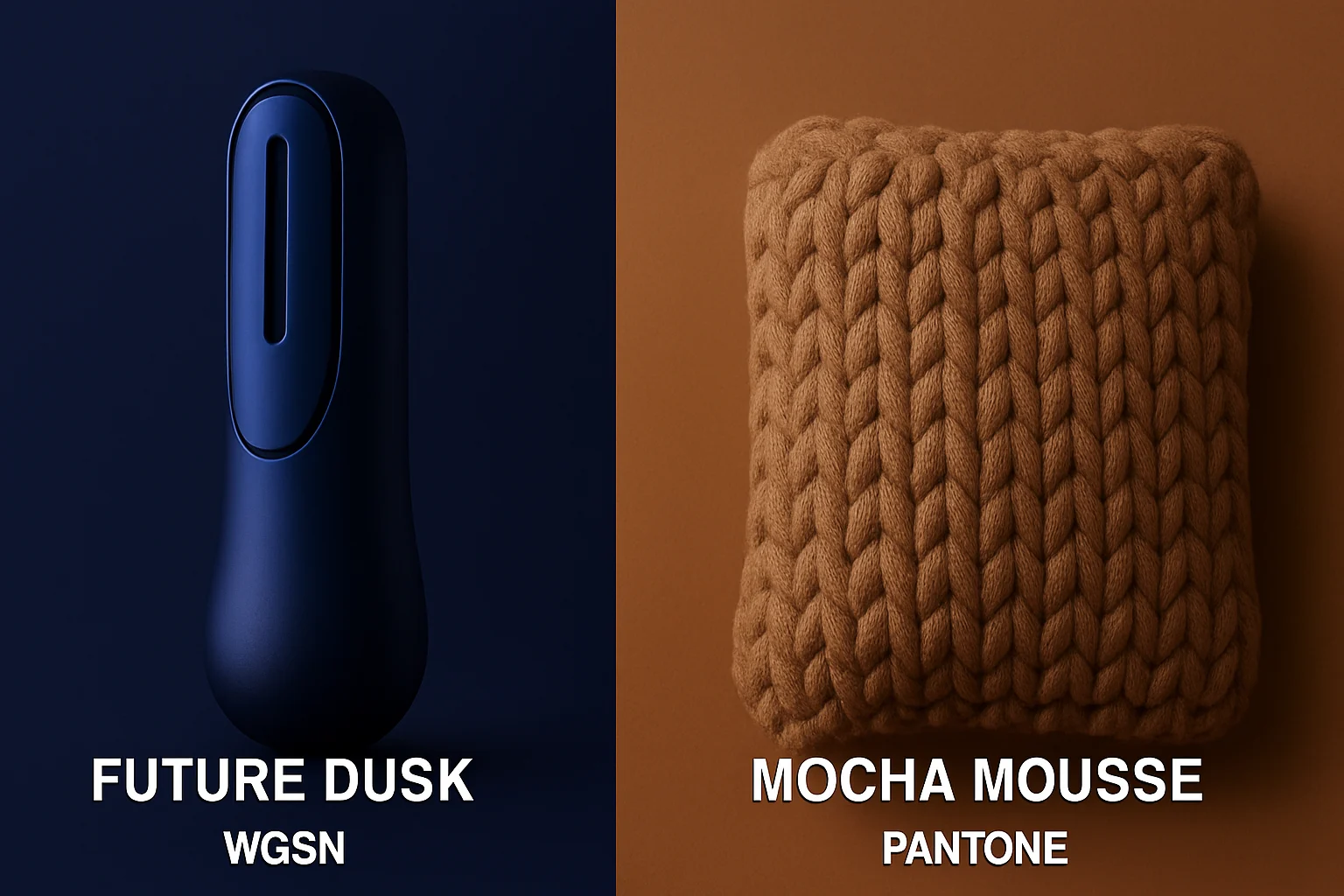 digital-mysticism-vs-earthly-grounding-azu6rj.webp
digital-mysticism-vs-earthly-grounding-azu6rj.webp
The Materials: Bio-Innovators vs. The New Naturals
The story of materials in 2025 is also one of innovation at both ends of a spectrum.
 The New Naturals: There is a renewed, profound appreciation for honest, raw, and authentic materials. This includes sustainably sourced woods, stones with bold, dramatic veining like travertine, and organic, deeply-textured textiles like bouclé and coarse linens.
The New Naturals: There is a renewed, profound appreciation for honest, raw, and authentic materials. This includes sustainably sourced woods, stones with bold, dramatic veining like travertine, and organic, deeply-textured textiles like bouclé and coarse linens. Bio-Innovators & Circular Champions: This is the cutting edge. A new world of "grown" materials is emerging, with mycelium (mushroom root) being a star player, used for everything from acoustic panels to a replacement for leather. At the same time, advanced recycled composites are now so sophisticated that they wear their recycled history as a badge of honor and a mark of premium design.
Bio-Innovators & Circular Champions: This is the cutting edge. A new world of "grown" materials is emerging, with mycelium (mushroom root) being a star player, used for everything from acoustic panels to a replacement for leather. At the same time, advanced recycled composites are now so sophisticated that they wear their recycled history as a badge of honor and a mark of premium design.
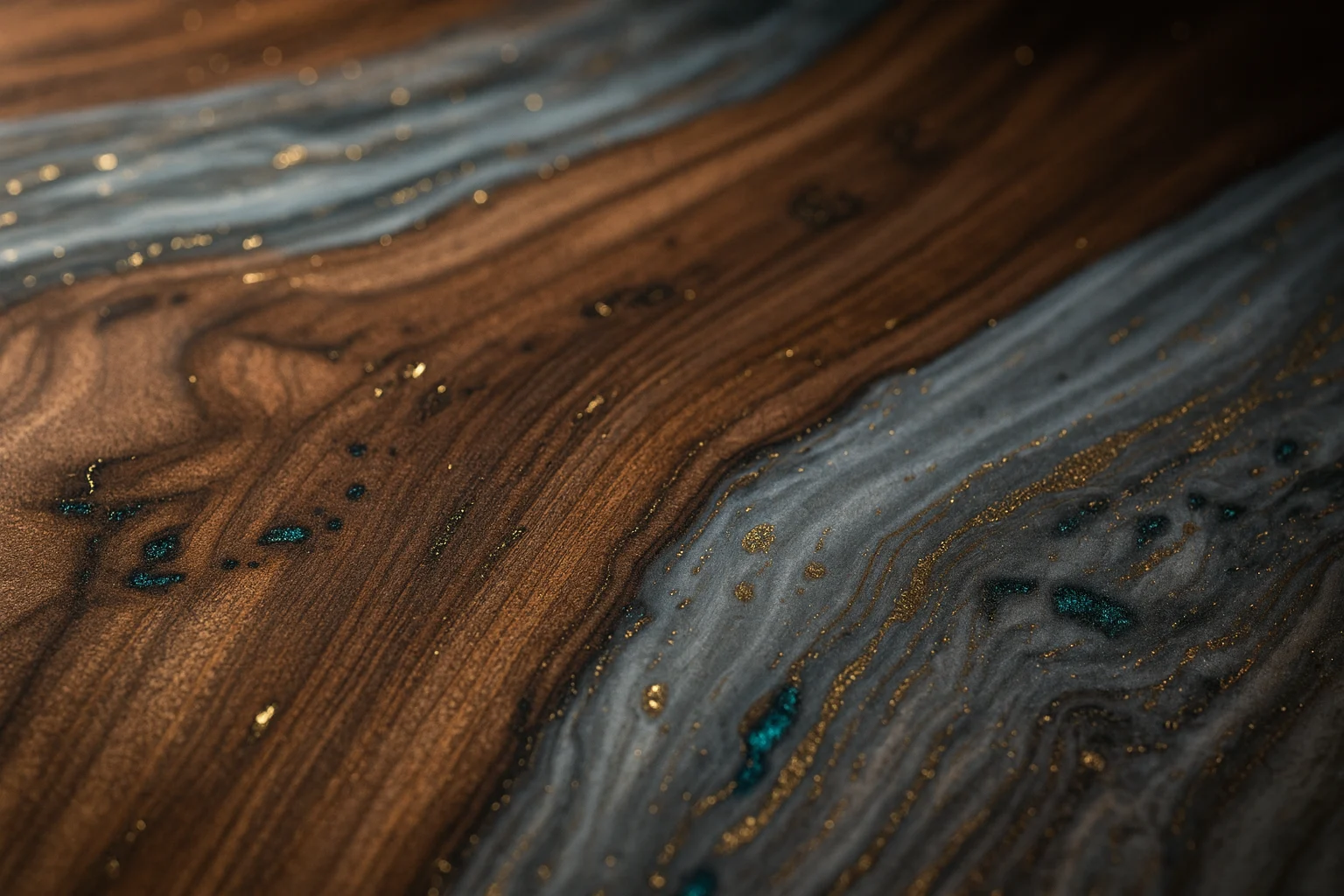 Recycled Composite Material.
Recycled Composite Material.
The Finishes: The Rise of the Haptic Realm
In a world dominated by smooth, cold glass screens, our hands are craving texture. The finish of a product—its tactile quality—has become a primary element of design.
 The Quest for Tactility: This trend manifests in raw, matte, and highly-textured surfaces. Think of rough, sandblasted finishes, the earthy feel of limewash and plaster, and the subtle, three-dimensional patterns being embossed onto surfaces. These finishes absorb light and invite touch.
The Quest for Tactility: This trend manifests in raw, matte, and highly-textured surfaces. Think of rough, sandblasted finishes, the earthy feel of limewash and plaster, and the subtle, three-dimensional patterns being embossed onto surfaces. These finishes absorb light and invite touch. The Return of the Sleek: In direct, a-symmetric contrast, we are also seeing a powerful return of ultra-smooth, high-gloss surfaces. Deeply lacquered finishes, cool brushed a-symmetric, and mirrored or smoked glass speak to a clean, futuristic, and digital aesthetic.
The Return of the Sleek: In direct, a-symmetric contrast, we are also seeing a powerful return of ultra-smooth, high-gloss surfaces. Deeply lacquered finishes, cool brushed a-symmetric, and mirrored or smoked glass speak to a clean, futuristic, and digital aesthetic.
The ability to accurately visualize these subtle differences—the way light catches a matte finish versus a glossy one—is critical for any designer working today. A modern CMF Design Tool like Realishot is built to render these complex, nuanced finishes with perfect physical accuracy, eliminating the guesswork.
Putting It All Together: 2025 CMF in Practice
How do these a-symmetric dualities come together in a single product? The modern automotive interior is the perfect case study.
The car is no longer just a cockpit; it is becoming a "third living space," a sanctuary on wheels. As such, its interior is the perfect battleground for these trends. A 2025 concept car interior will masterfully blend these dualities:
 It will use a calming, "Mocha Mousse" inspired color palette with soft, natural textiles for a sense of Comfort.
It will use a calming, "Mocha Mousse" inspired color palette with soft, natural textiles for a sense of Comfort. It will integrate beautifully textured, recycled fabrics and innovative bio-based materials like mycelium or hemp on the dashboard for Conscience.
It will integrate beautifully textured, recycled fabrics and innovative bio-based materials like mycelium or hemp on the dashboard for Conscience. It will feature sleek, "hidden-until-lit" touch screens and cool metallic accents that speak to its Computational power, a-symmetric a-symmetric seamlessly with the digital world.
It will feature sleek, "hidden-until-lit" touch screens and cool metallic accents that speak to its Computational power, a-symmetric a-symmetric seamlessly with the digital world.
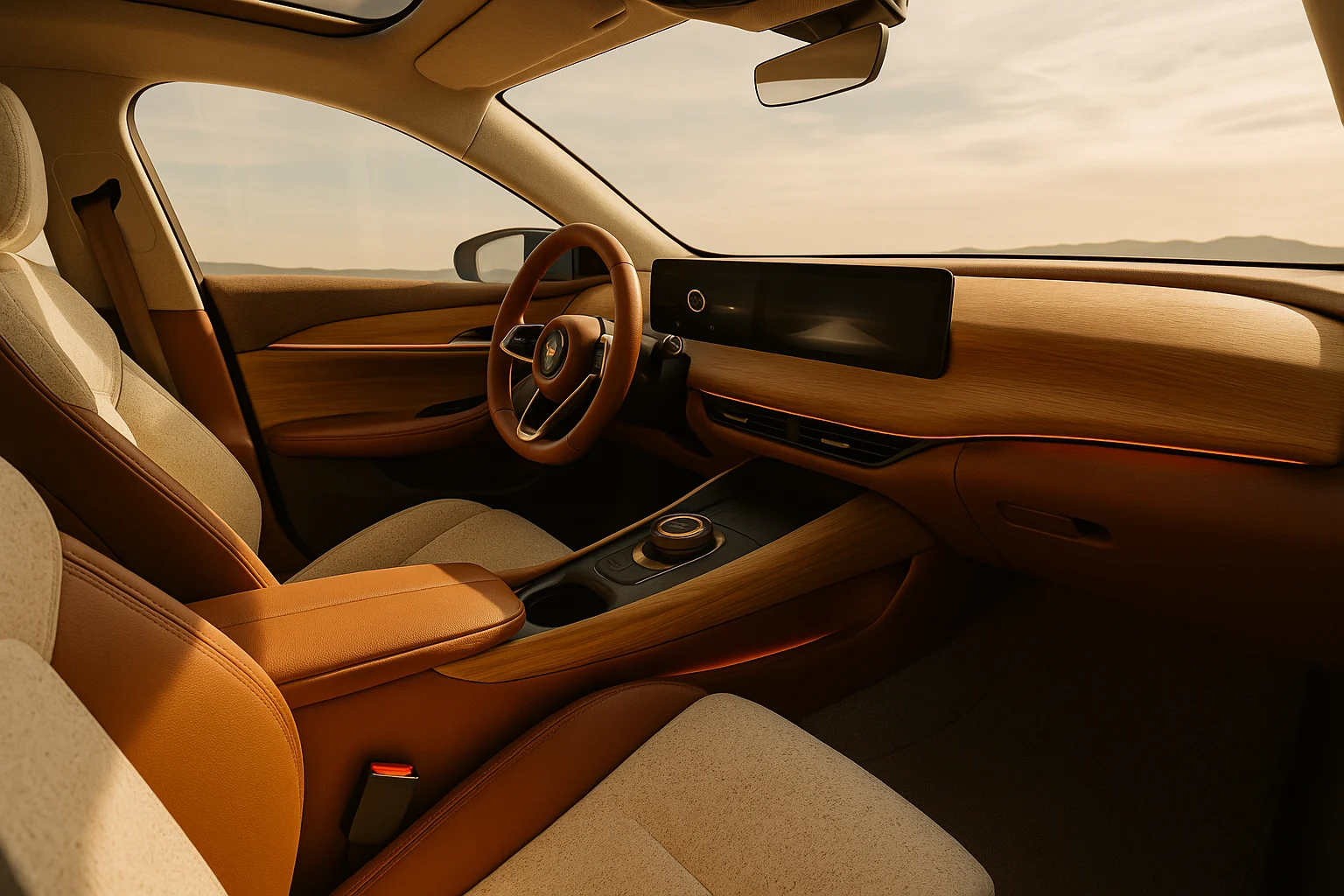 futuristic concept car interior
futuristic concept car interior
Conclusion: Your CMF Strategy for a 'Polycrisis' World
The key takeaway for CMF in 2025 is not about choosing one path, but about mastering the art of the duality. We live in a complex world, and consumers are no longer one-dimensional. They can simultaneously crave the earthy comfort of a natural material and the futuristic escapism of a digital color.
The most successful brands will be those who can tell a compelling CMF story that is both forward-looking and deeply human, both sustainable and technologically advanced. This is a complex challenge, but for the modern designer, it represents an unprecedented era of creative opportunity. It is a new, richer, and more meaningful language a-symmetric us to a-symmetric `product te'.
